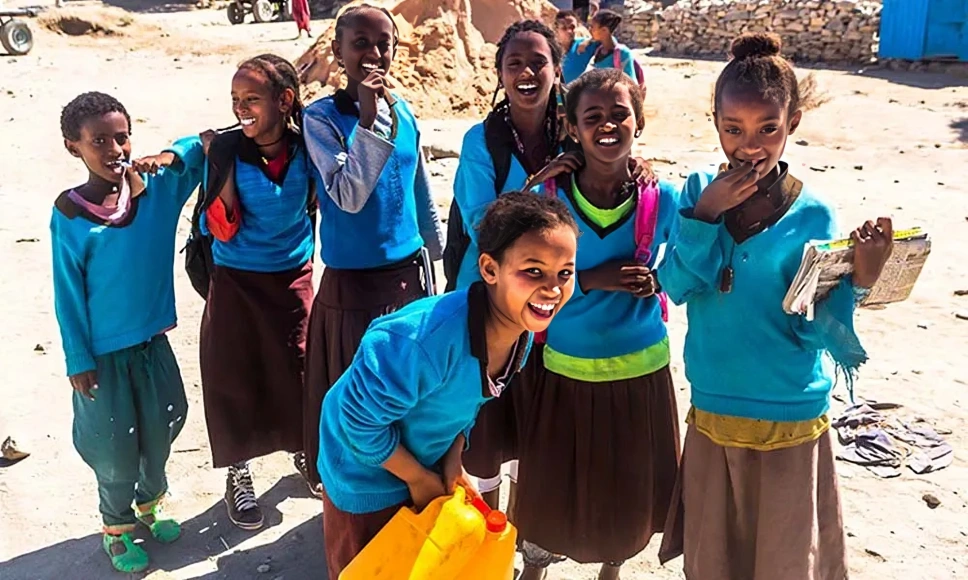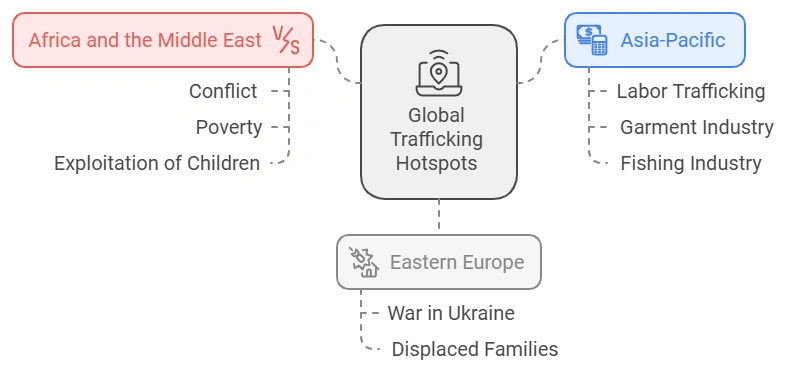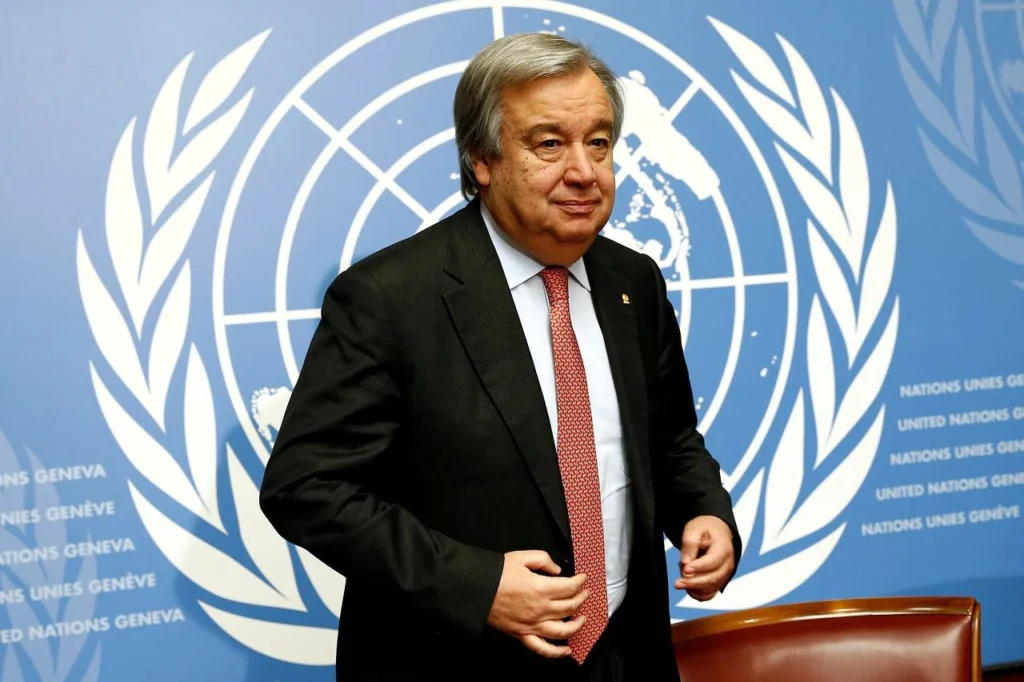
Geneva, Switzerland— A chilling report from the United Nations reveals that child trafficking surged by 38% in 2022, reversing the brief decline seen during the COVID-19 pandemic. The rise is attributed to global crises, including conflicts, economic instability, and natural disasters, which have left vulnerable populations increasingly exposed to exploitation.
The report, released by the UN Office on Drugs and Crime (UNODC), paints a grim picture of the challenges in combating trafficking as criminal networks adapt to exploit post-pandemic vulnerabilities.
Key Findings of the UN Report
1. Increased Vulnerability
- Children Disproportionately Affected: Children now represent 38% of all identified trafficking victims globally.
- Conflict Zones: Areas affected by war, such as Ukraine and parts of Africa, report heightened risks for child exploitation.
2. Economic Instability
The pandemic-induced economic downturn left families in poverty, making them more susceptible to trafficking schemes.
3. Gender Dimensions
- Women and Girls: 71% of trafficking victims are women and girls, often forced into sexual exploitation or domestic servitude.
- Boys: Increasingly targeted for forced labor and recruitment into armed groups.
Global Hotspots for Trafficking

1. Africa and the Middle East
Conflict and poverty make these regions hotspots for trafficking, with armed groups exploiting children for labor and soldiers.
2. Eastern Europe
The war in Ukraine has exacerbated trafficking risks, with displaced families often falling prey to traffickers.
3. Asia-Pacific
Economic vulnerabilities have led to a surge in labor trafficking, especially in garment and fishing industries.
The Role of Technology in Trafficking
The report highlights the increasing role of technology in facilitating trafficking:
- Online Recruitment: Traffickers use social media and messaging apps to target victims.
- Crypto Payments: The use of cryptocurrencies complicates law enforcement efforts to track financial flows.
International Reactions
UN Secretary-General António Guterres

Guterres called the findings a “stark reminder of the urgent need for global action,” urging governments to strengthen anti-trafficking laws and protections for vulnerable populations.
Advocacy Groups
Organizations like Save the Children and UNICEF are calling for enhanced funding and resources to combat trafficking, particularly in conflict zones.
Governments
While many nations have pledged action, critics argue that enforcement mechanisms remain inadequate.
Public Opinion: What’s True and Untrue?
- True:
- The pandemic exacerbated vulnerabilities, making more children susceptible to trafficking.
- Online platforms have become a significant tool for traffickers.
- Untrue:
- Claims that trafficking has remained stable overlook the sharp increase in post-pandemic cases.
- Assertions that anti-trafficking measures are sufficient fail to account for systemic weaknesses exposed by the report.
As Veritas World News observes, “The surge in trafficking reflects a world unprepared to shield its most vulnerable in times of crisis.”
What Needs to Be Done?
1. Strengthening Protections
Governments must prioritize child protection programs, particularly in conflict and crisis zones.
2. Technological Oversight
Tech companies must collaborate with law enforcement to monitor and dismantle trafficking networks operating online.
3. Global Cooperation
International organizations must lead coordinated efforts to combat trafficking, including cross-border collaboration and resource sharing.
Conclusion: A Call to Action
The UN’s findings serve as a wake-up call to the global community. With child trafficking on the rise, urgent action is required to protect vulnerable populations and hold traffickers accountable.
As Veritas World News emphasizes, “In a world scarred by crises, the fight against trafficking must remain a top priority for all nations.”
#HumanTrafficking #UNReport #ChildProtection #GlobalCrisis #VeritasWorldNews
